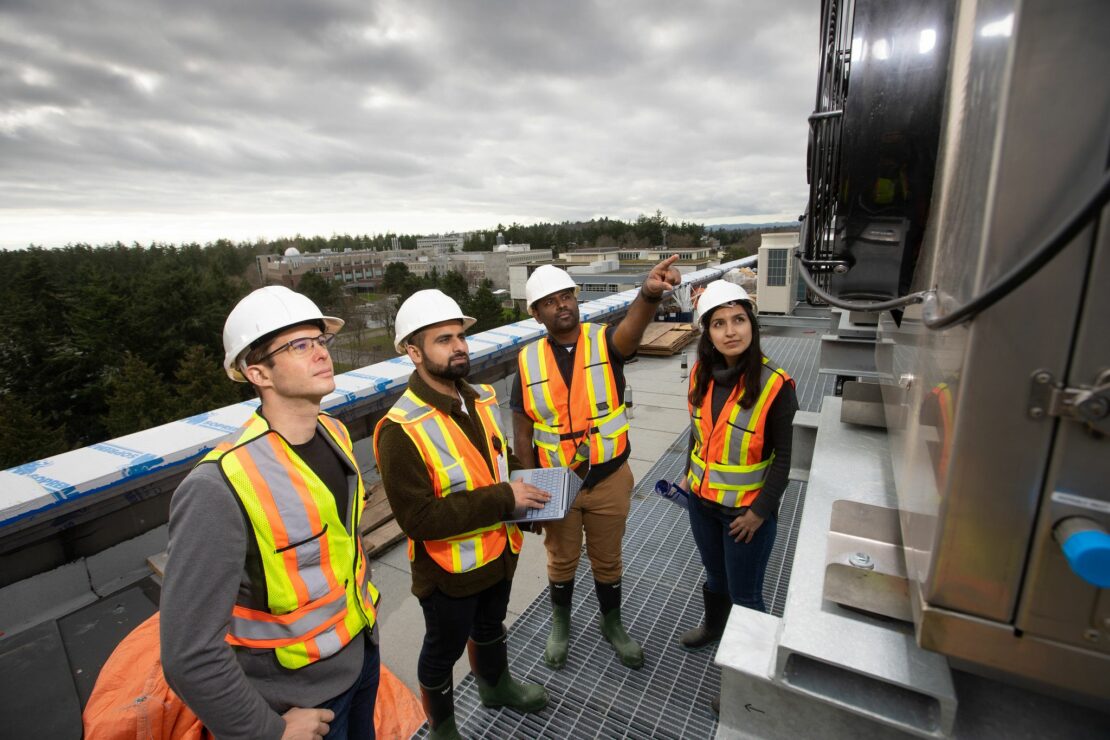The UVic-based initiative is working to find ways of retrofitting existing buildings

About one third of the world’s carbon emissions come from buildings, and according to UVic civil engineering associate professor Ralph Evins, “the new ones aren’t the problem, it’s the old ones” that contribute most.
A UVic-based project called the ReBuild Initiative is now taking a new collaborative approach to sustainability research on buildings.
The initiative, led by Evins, is working to solve this problem with building retrofits. Evins’ team is taking a “data-driven” approach to find solutions and act as a hub for research on the topic, with the eventual goal of creating a dashboard that building managers and organizations can use to make changes.
According to Evins, there is no shortage of data when it comes to the environmental sustainability of old buildings, but knowing what to do with the information poses a challenge for building managers and others in the industry. The ReBuild Initiative provides the expertise necessary to make use of that data.
The team involved in the project doesn’t just include expert researchers and engineers like Evins. The initiative also provides opportunities for students to get involved.
One of these students is Civil Engineering PhD student, Rajeev Kotha.
Kotha is currently working on a project under the ReBuild umbrella, which is partnered with the Building Owners and Managers of British Columbia (BOMA).
In Greater Victoria, the managers of over 30 buildings have committed to decrease building emissions and energy use by 50 per cent by 2030.
“It’s a major undertaking,” said Kotha. “[We] are acting as a forefront for several other cities and societies to take up this challenge.”
While Kotha will not be involved in implementing changes to the buildings, he explains the project will act as a testbed for future efforts in helping managers to grasp and appreciate the benefits of retrofitting and find the right combination of retrofits for their individual buildings.
“Retrofitting can be as simple as changing light bulbs … but then on the other side of the spectrum, you have deep retrofits,” Kotha explains. “[These are] disruptive in nature, so knowing the right combination and balance of these measures can be tricky because each building is its own thing.”
In addition to reducing the environmental impact of the buildings, the research done by Kotha and the rest of the ReBuild team benefits building owners, managers, and occupants.
High-efficiency equipment means energy and cost savings. “You are helping them reduce their bills. That’s also a plus in everyone’s books,” said Kotha.
Looking ahead, Evins also sees opportunities for students to get involved through their schoolwork. “Hopefully, some of it boils down into the classroom, and there will be some bits of this [project] occurring in … courses here and there,” he said.
According to Evins, directed studies courses also allow students to work with professors on the initiative while earning academic credits.
The initiative isn’t just collaborative between researchers of various experience and education levels, but across departments and institutions.
“There’s a professor who’s joined with geography and somebody from psychology who might get involved,” said Evins. “There [are] other ways of coming and looking at this from other angles.”
While the initiative does not involve changes to UVic buildings, Evins hopes to work more with the Facilities Management department on campus in the future.
“I’d like to bring them in on this,” Evins said. “I’m sure we will find ways to work with them on analyzing their data.”
The ReBuild Initiative is also partnering with other universities and corporations.
Evins is one of only two UVic professors working on the initiative.
“It’s unusual,” said Evins. “All of the others are at different institutions across Canada and around the world.”
Each partner working with the initiative will contribute funding and a problem that fits with the ambitions of ReBuild.
Evins’ team will then help come up with potential solutions. “Maybe it works, maybe it doesn’t,” Evins explains. “But you’ll learn something else along the way.”
According to Evins, this partnered, collaborative approach allows companies and organizations to work together and contribute to research in a way they normally would not.
“I’m kind of the hub,” Evins explained. “It’s useful to have a kind of impartial academic partner in the middle of these things because everybody knows I have no skin in the game.”
A neutral third party, like Evins, prevents disagreement between the companies.
“None of them would agree to work together individually perhaps, but they’ll all come and work with you,” said Evins.
All 15 of the partners he has approached so far have agreed to collaborate.








